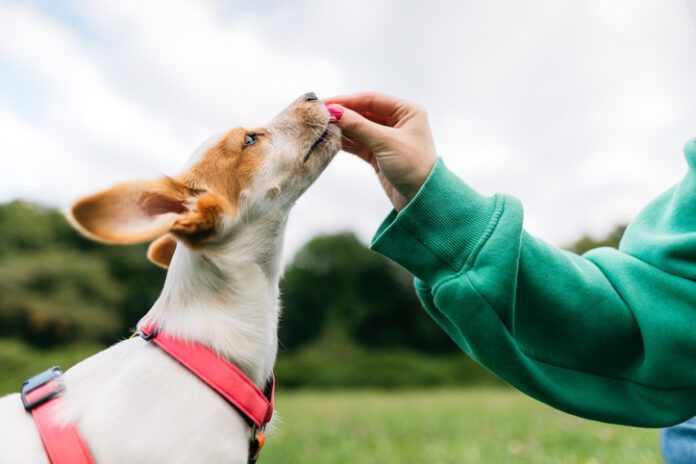Another useful exercise involves teaching your dog to go to a specific place, like a mat, to lie down and relax. This can be a fixed location in your home (in front of the fireplace, by the toy box, etc.), but I find it more valuable to use a portable carpet square, mat, or dog bed of some sort. This gives you the flexibility to send your dog to her spot wherever you are; you just have to take her mat along with you. This behavior is very useful for a dog who tends to “bug” you (or your guests) for attention.
- Take your dog to a bed, mat, carpet square, or throw rug you have obtained for this purpose, say “place,” “go to bed” (or whatever word or phrase you plan to use). You can lure her to the bed with a treat, or place a treat on the bed and encourage her to go to it and eat it. Click or say “Yes!” when she does it, then ask her to “Down,” and click and treat for that.
- Do this a number of times until you think your dog is beginning to associate the word or phrase with lying down on the mat.
- Then you can start cueing the behavior without the lure. Click (or say “Yes!”) and give her a reward when she complies. You can also request a “Wait” so she doesn’t pop right back off the mat.
- When the dog is doing this part well, begin moving farther away from the mat before giving your “Place” cue.
- Ultimately, if you wish, you can ask your dog to go to her place from anywhere in the house. You can name several different places and teach her to go to each on your request. You can also take the mat with you when you go out and use it in public or at friend’s houses (this is why a small, portable throw rug or mat is ideal).
One alternative to the approach described above is to “shape” the behavior. This is done by marking (click or “Yes!”) and rewarding any behavior remotely related to the mat, gradually raising the criteria (what she needs to do to get a click and treat) until she reliably goes to the mat and lies down on it. Add the cue when she reliably moves to the mat, and then go to Step 4 above.
Challenge: Your dog lies near or only partially on the mat in an effort to be nearer to you or your guests (or whatever he’d rather be doing).
Solution: Be clear about how much of your dog has to be on the mat for it to “count” (your choice!) and reinforce your dog only if he meets that standard.
For more advice on ways to train your dog to be calm, purchase Calm Down Rover! Teach Your High-Energy, Hyperactive Dog to Chill Out & Relax… from Whole Dog Journal.





